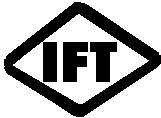 |
FISHING NETS |
|
| WHEN ORDERING FISHING NETS | |
1. KIND AND SIZE OF YARN
|
|||
2. TYPE OF TWINE
Generally twine is understood as 3 strand-twisted twine, but it can be twisted in 2 strands, 4 strands, 7 strands or 11 strands also depending on requirement. |
|||
| 3. DIRECTION OF TWIST
There are two directions of twist as you can see in the illustrations. Namely "Z" type is generally called LEFT twist and "S" type called RIGHT twist. |
|||
|
 |
||
| return to top | |||
4. NUMBER OF PLY AND STRANDS OF TWINE USED (a) Number of plies means total number of single yarn twisted together to compose twine. |
|||
 |
Nylon 210 Deniers Number of ply: 9 Direction of twist: Right The above description Is simply described as "Nylon 210d/9-R3" |
||
| 5. DEGREE OF TWIST
(a) Soft Twist If not described, degree of twist is regarded as "Medium". |
|||
| 6. TYPE OF KNOT | |||
(a) Single English Knot (S/K) If not described, type of knot is generally regarded as "Single English Knot". |
 |
||
| return to top | |||
| 7. SIZE OF MESH
There are many methods of describing the mesh size. It, therefore, should be clearly described in any order sheet. a) Stretched Mesh |
|||
| (a) Stretched Mesh (b) Half Mesh or Square Mesh (c) 11 Knots in (11K/5) |
 |
||
This measurement is the number of half meshes in one Alen, and is adopted in Sweden and Norway. One Alen : 0.628Meter in Norway,0.549 in Sweden.
This measurement is by the number of half meshes in one yard, and it is used in Holland. One yard: About 0.914 Meter
This measurement (Passales) is by number of half meshes in one meter, and used in Portugal and Spain.
This measurement is used in Korea, Formosa, the Philippines, Japan and other countries in East Asia.
|
|||
| 8. SELVAGE AND REINFORCEMENT Usually reinforcement is given to top or bottom of net or to both sides, or to all these places plus some where inside nets. For reinforcement, double twine of same thickness as net twine, or single thicker twine is used. |
|||
 |
 |
 |
 |
| SINGLE SELVAGE | DOUBLE SELVAGE | DOUBLE MESH | REINFORCED SELVAGE |
| 9. DEPTH AND LENGTH OF NET Depth of net is shown by number of meshes, and Length is shown by unit of length i.e. meter, yard, feet, fathom. The length is to be measured by stretching the net lengthways. |
|||
| return to top | |||
| 10. HEAT SETTING AND PACKING METHOD
The netting can be stretched and heat-set by two ways, one is called DEPTHWAY STRECHING, and the other is called LENGTHWAY STRETCHING. This information is very important since this heat setting direction's causes convenience or inconvenience for mounting and mending nets. (a) Depthway stretched and folded: |
|||
 |
|||
| Back To Home | return to top | ||